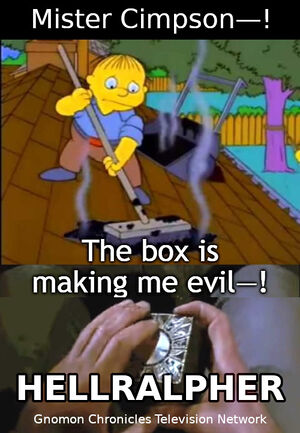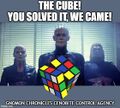Hellralpher: Difference between revisions
Jump to navigation
Jump to search
No edit summary |
No edit summary |
||
| Line 22: | Line 22: | ||
* [ Post] @ Twitter (16 February 2022) | * [ Post] @ Twitter (16 February 2022) | ||
* [https://twitter.com/GnomonChronicl1/status/1462591357336367109 Post] @ Twitter (21 November 2021) | |||
* [https://en.wikipedia.org/wiki/Hellraiser Hellraiser] @ Wikipedia | * [https://en.wikipedia.org/wiki/Hellraiser Hellraiser] @ Wikipedia | ||
| Line 31: | Line 32: | ||
[[Category:Hellraiser (nonfiction)]] | [[Category:Hellraiser (nonfiction)]] | ||
[[Category:Horror (nonfiction)]] | [[Category:Horror (nonfiction)]] | ||
[[Category:Ralph Wiggum (nonfiction)]] | |||
[[Category:Software (nonfiction)]] | [[Category:Software (nonfiction)]] | ||
[[Category:The Simpsons (nonfiction)]] | [[Category:The Simpsons (nonfiction)]] | ||
Revision as of 07:47, 16 February 2022
Hellralpher is an American television series about Ralph, a boy with a magical both that summons the Cenobites, a group of extra-dimensional, sadomasochistic cartoon animators who cannot differentiate licensed and unlicensed intellectual properties.
In the News
Hellcuber is a 1987 British geometry horror film about a haunted Rubik's cube which summons the Cenobites, a group of extra-dimensional, sadomasochistic mathematicians who cannot differentiate between proofs and conjectures.
Hellresin is a 1987 British supernatural adhesive film about a mystical epoxy which summons the Stickybites, a group of extra-dimensional, sadomasochistic beings who cannot differentiate between resin and hardener.
Fiction cross-reference
Nonfiction cross-reference
External links
- [ Post] @ Twitter (16 February 2022)
- Post @ Twitter (21 November 2021)
- Hellraiser @ Wikipedia


